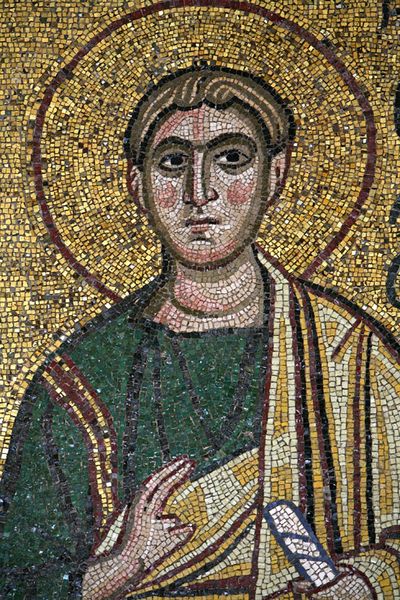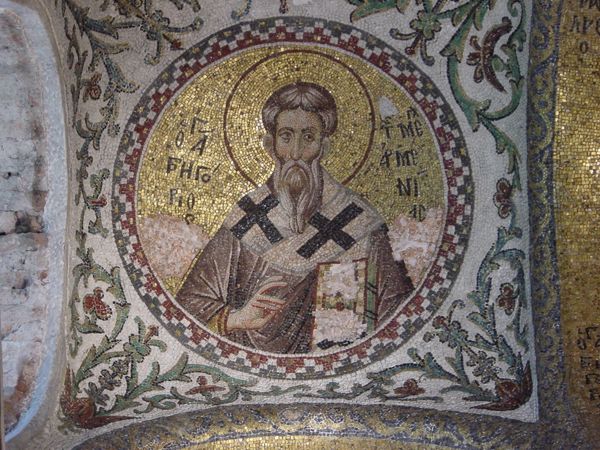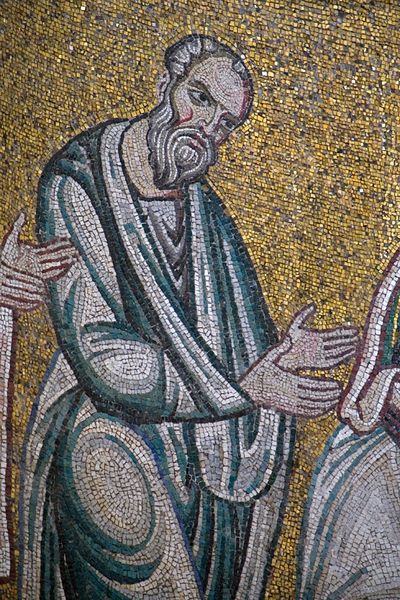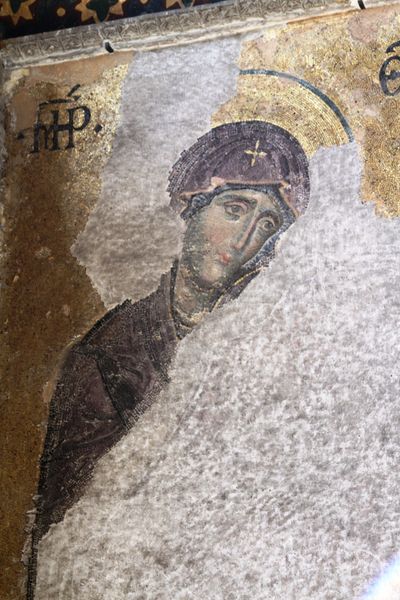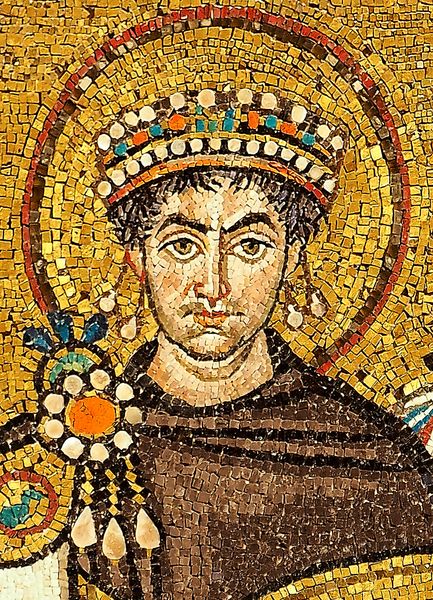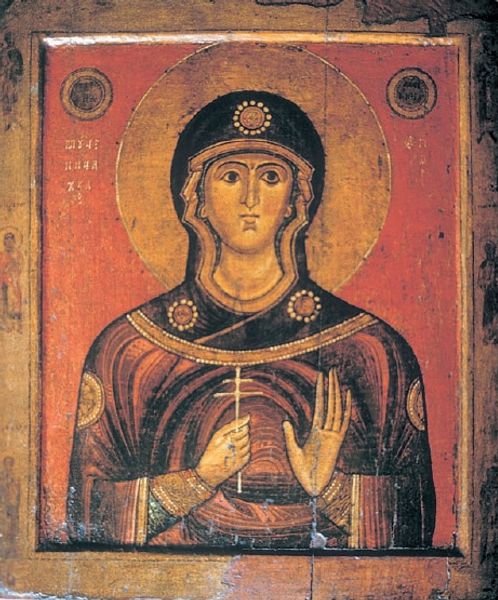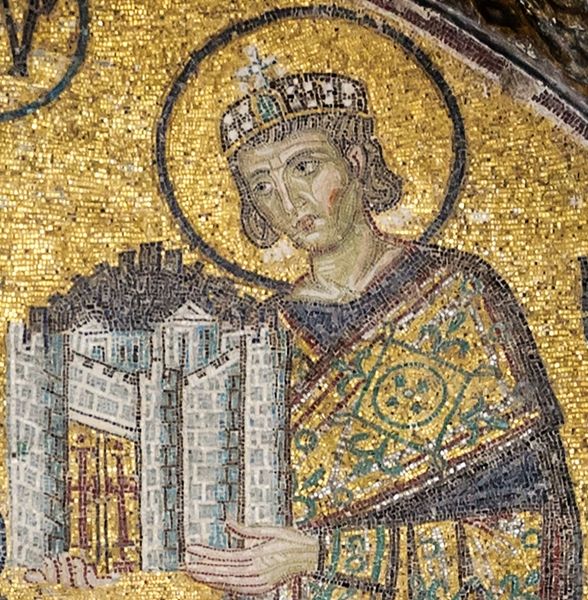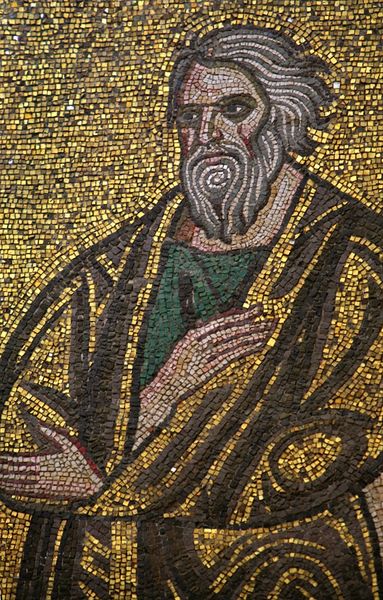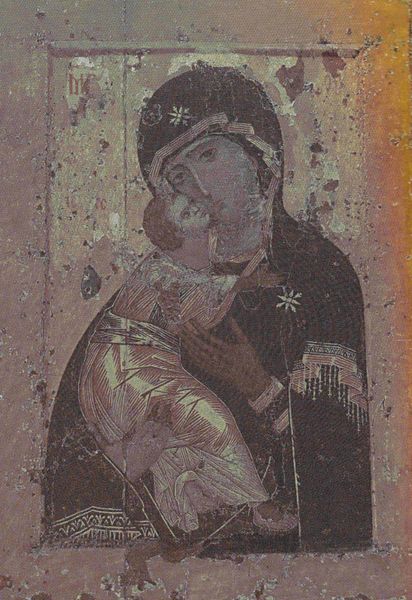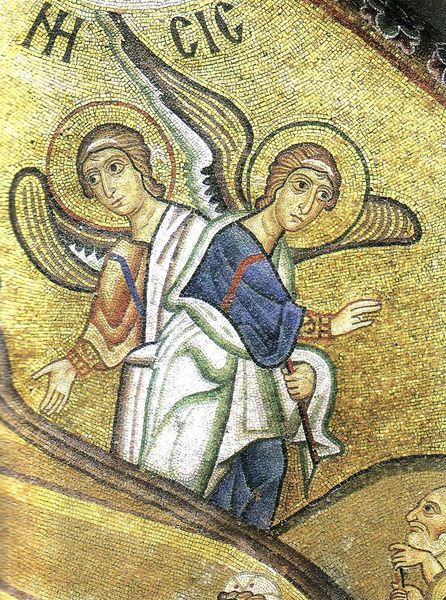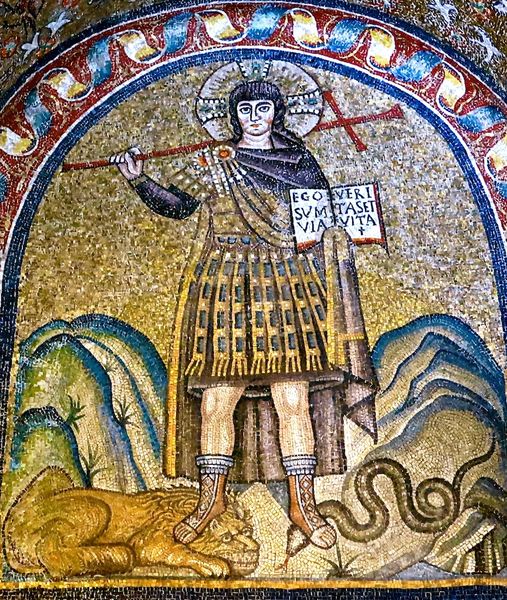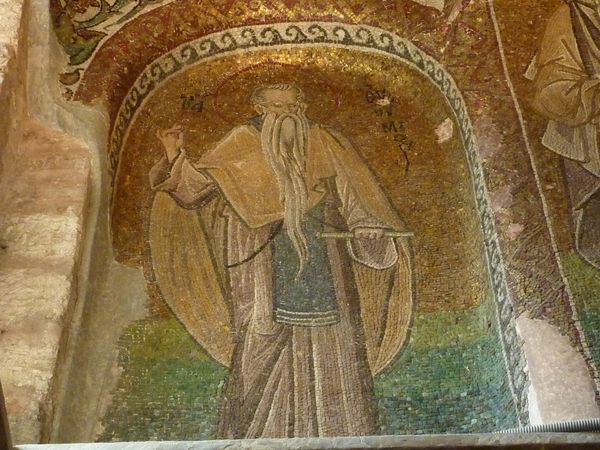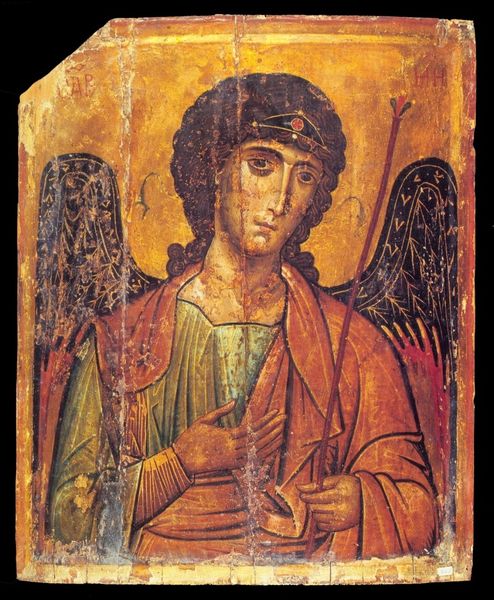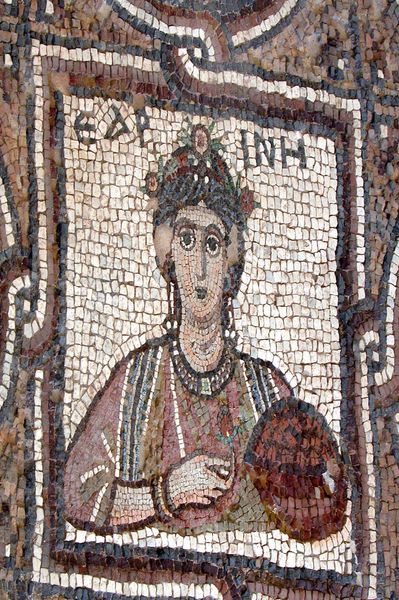
mosaic
#
portrait
#
mosaic
#
byzantine-art
#
prophet
#
holy-places
#
painted
#
figuration
#
mural art
#
tile art
Copyright: Public domain
Editor: This mosaic of an angel, dating back to 1113, forms part of the Eucharist Cycle in Saint Sophia Cathedral, Kyiv. I find the angel's gaze incredibly direct, almost confrontational. How do you interpret this work within its historical context? Curator: The imposing nature you observe stems significantly from its Byzantine context. Consider where it's placed: high up in a cathedral, overlooking worshippers. Byzantine art served the Church's agenda. What might a mosaic like this communicate about power and devotion in that society? Editor: So, it’s not just decoration, but a deliberate assertion of authority and religious doctrine? The artist makes specific choices in terms of materials, setting, and how the figure is presented that communicate something greater. Curator: Exactly. The use of mosaic, the gold tesserae specifically, conveys wealth, status, and the heavenly realm. It visually reinforces the Church's message, controlling not just the physical space, but the very image of divinity. Think about how access to art like this shaped peoples beliefs, especially when they couldn't read! Does that change how you see the piece? Editor: It does. It emphasizes that images played a vital role in disseminating religious teachings to a largely illiterate population. I had considered the artistry and the beauty of it, but failed to really examine who was in control, who was empowered, and what impact it had on everyday people in the Byzantine period. Curator: Indeed. The museum *is* a temple. These sacred objects are placed within them. Art is shaped by these considerations: control, access, authority and the role of those cultural institutions. It all becomes clearer once we understand that images played such an important, persuasive part in their culture.
Comments
No comments
Be the first to comment and join the conversation on the ultimate creative platform.
